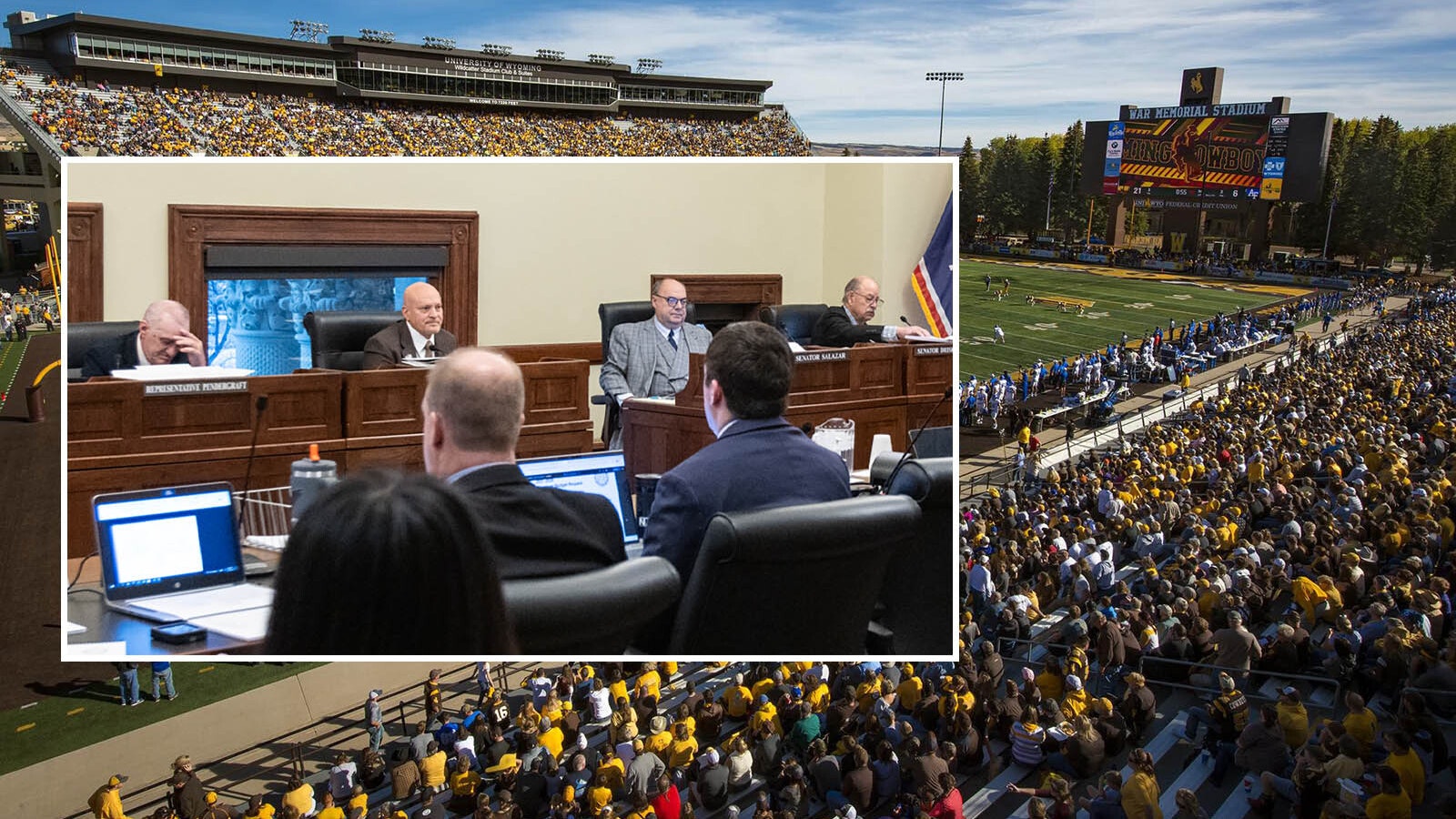A year after Teton Pass suffered a catastrophic failure when a significant portion of Wyoming Highway 22 collapsed down the side of the mountain, traffic will drive on a newly reinforced road over the “Big Fill Slide” as early as the end of this month, Wyoming transportation officials announced.
In what’s been called a “textbook response” to the road collapse, the Wyoming Department of Transportation will open the new Teton Pass before the end of June. The entire project will be completed in July.
“We’re on schedule for an end-of-July completion date,” John Eddins, district engineer for WYDOT District 3, told Cowboy State Daily. “Everything’s looking good up there.”
A Layered Approach
The new Teton Pass looks exactly like the old one, said Eddins. It’s occupying the same footprint as the portion that collapsed June 8, 2024, into the ravine below.
Drivers won’t see the extent of the $40 million project, which included new steel supports drilled into the mountain’s bedrock and a ziggurat-like structure of “reinforced fill” to provide additional stability.
“The reinforced fill is layered,” Eddins said. “There are layers of lightweight foam glass aggregate that weighs substantially less pounds per cubic foot than the native or manufactured fill. That’s going to be the platform for the new roadway.”
The infill is enclosed in metal baskets for added stability. Steel pipes set in a 15-by-15-foot grid, capped by 3-by-3-foot concrete blocks, keep those infill baskets in place.
The layers of reinforced fill will also protect the new drainage system installed to mitigate water saturation on the mountainside, which caused the catastrophic failure in June 2024.
“We’ve incorporated horizontal drains to keep the water from building up in the field, as well as a sheet drain behind the field to drain water,” Eddins said.
The final phase of the Teton Pass project will be reclaiming the land around the finished road. The layers of reinforced fill will be covered with native soil, obscuring the architectural and engineering achievement completed over the last year.
Eddins believes the new Teton Pass is a marked improvement.
“We'll have a flatter slope on the north side of that highway, making that side of the road safer,” he said. “I've worked for departments since 1988, so I've seen a lot of things similar to this, but this was a textbook response. We have a great team and I’m very proud of what we’ve done.”

The Final Closure
To ensure everything stays on schedule, Teton Pass will be closed for one more multi-day period. Eddins said they’ll close the pass at 6 p.m. on Friday, June 20, and reopen it at 6 a.m. on Monday, June 23.
Bob Hammond, WYDOT resident engineer, said the closure is needed to pave the new road and have it ready for traffic by Monday. It was either that or a complicated alternating lane closure that would be logistically complex and take longer.
“We could do the work under a lane closure, which would only give drivers one alternating lane of travel for 10 days or more,” he said. “If we did that, it would cause extensive delays and wait times for drivers for weeks, backing up traffic on the mountain every day. Those delays would likely be longer than the detour around during commuter times.”
The good news is that once Teton Pass reopens on June 23, drivers will be using the new road. The existing detour, which was open to traffic in an astonishing three weeks, will be removed, and the landscape will be reclaimed.
“After discussing with the contractor and local stakeholders, we thought it was best for the community if we just close the road and get the work done quickly in one weekend,” Hammond said.
Won’t Be Back For A While
The wet spring of 2024 caused Teton Pass to fail, according to an evaluation by WYDOT geologists and engineers. The rapid melting of the spring snowpack saturated the infill supporting the old road, leading to significant cracks in the pavement and, ultimately, a landslide that destroyed it.
Eddins said WYDOT designed the replacement with moisture mitigation in mind. The completed project has already helped ensure future stability.
“We're monitoring the groundwater and checking for any movement in the fill using inclinometers, and everything looks good,” he said. “In fact, that fill replaced against that detour is actually stopping the movement.”
Nevertheless, Eddins pointed out that the existing infrastructure had fulfilled its intended lifespan when it failed.
“One of the criteria we placed on the project is that it had to provide a 75-year design life and meet stability requirements,” he said. “This was an expensive project that meets that goal, but what was there before lasted 70 years. The lifespan of this project could extend beyond our design life.”
Eddins wanted to thank the residents of western Wyoming and eastern Idaho for their patience with the project. The loss of Teton Pass devastated local commuters and communities, but now they have a permanent solution that will keep the corridor stable and open for decades.
“We realize Teton Pass is a critical link for workers and the tourists in Teton County, Idaho, and Teton County, Wyoming, and we're glad we could get it taken care of,” he said. “During this closure, we’re going to tie the existing road into the new road and get people off the detour. That’s where we’re at, and we’re on schedule to finish before the end of July.”
Andrew Rossi can be reached at arossi@cowboystatedaily.com.





